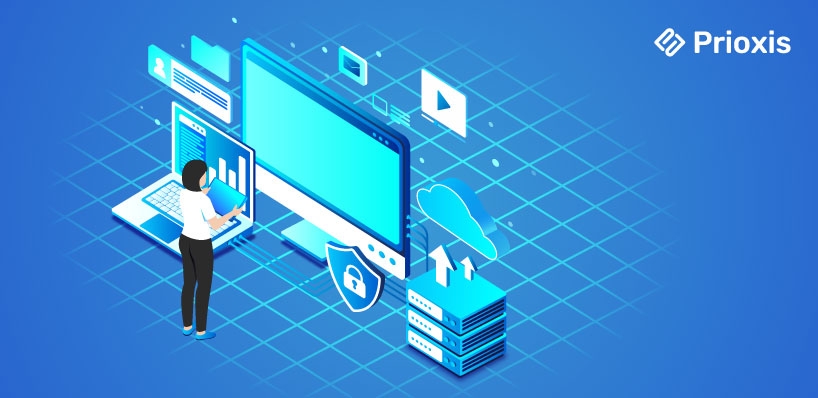
Table of Content
Cloud computing has been a catalyst for the evolution of several other technologies, such as Big Data Analytics, Serverless Computing, AI, and DevOps. The current cloud computing market size is $676.29 billion, and it is forecasted to reach $1 trillion before 2030. People around the globe are generating vast amounts of data every day, which can be essential for many business organizations. This is where cloud consulting comes to the rescue. Organizations can store, process, and analyze this data in the cloud without overloading their hardware infrastructure.
Cloud computing is leading the way in the digital transformation of businesses. This technology is relatively new compared to others, which is why there is continuous innovation and emerging trends in the field. Businesses need to stay updated with these trends to keep up with recent developments.
This blog discusses several trends in cloud computing services that are reshaping the outlook of many industries. Let's explore how we can leverage these innovations in our cloud application development to make it more secure, innovative, and cost-effective.
Let’s discuss top cloud computing trends which reshaping businesses in 2025.

It is expected that there will be an increase in the adoption of hybrid and multi-cloud strategies. Businesses are blending public and private clouds to take advantage of the benefits offered by both platforms. Hybrid cloud models combine on-premises and cloud infrastructure to leverage their scalability, efficiency, and cost-effectiveness. Hybrid cloud migration is gaining traction, as it enables organizations to utilize key features from multiple cloud platforms and technologies.
This approach helps reduce downtime, as an outage in one service will not affect the entire infrastructure. It also helps prevent vendor lock-in and supports business continuity.
A major recent development in cloud computing is the integration of AI with cloud infrastructure. The amalgamation of AI and cloud computing enables businesses to create scalable computing resources, efficient data storage and processing, and AI-optimized hardware infrastructure. This convergence has given rise to several other technologies, such as AIOps, AIaaS, MLOps, and AI infrastructure services.
Organizations that adopt this AI integration with cloud are more likely to thrive in the long term.
Retrieval-augmented generation (RAG) services are gaining traction as an innovative trend in cloud computing. Cloud platform providers are increasingly adopting RAG-based solutions to differentiate their platforms from others. RAG and large language models (LLMs) represent a major technological revolution, and the cloud computing industry is actively seeking to leverage their potential.
The demand for real-time data insights is growing rapidly. More than 90% of businesses are optimizing IT infrastructure in the cloud. Organizations require up-to-the-minute information to act on current trends rather than relying on outdated data.
Moreover, as streaming becomes the norm in entertainment and communication, businesses increasingly need storage solutions and solid-state devices that prioritize instant data access.
Besides AI, cloud computing unlocks transformative technologies like the Internet of Things (IoT), blockchain, and quantum computing.
Cloud platforms eliminate the need for substantial investments in infrastructure, enabling businesses to quickly test and evaluate these emerging technologies without committing long-term.
Security remains a top priority as organizations continue to grapple with sophisticated cyber threats. Encryption, authentication, and disaster recovery tools will see increased demand.
Both cloud providers and customers are prioritizing resilience strategies to combat emerging risks such as AI-powered attacks and social engineering.
Major cloud migration service providers have pledged to achieve net-zero carbon emissions in their operations by 2040 or earlier. They are also aiming to transform entirely on renewable energy.
This commitment to greener practices will drive the adoption of sustainable cloud computing, with providers striving to make data centers more energy-efficient.
Businesses need to protect customer data and ensure compliance with privacy regulations when using cloud services.
In 2025, technological, legislative, and regulatory solutions will focus on safeguarding data transferred to third-party cloud providers. Trust in data protection will remain critical to building customer confidence.
The serverless architecture model is popular because of its efficacy and cost-effectiveness. It eliminates the need to manage server infrastructure, allowing businesses to pay only for the resources consumed.
This model helps companies optimize resources, reducing overhead costs and allowing them to focus on core activities.
Edge computing processes data closer to where it's collected, reducing bandwidth usage and providing faster insights. Wearable health monitors and IoT devices can identify anomalies locally, notifying users immediately without the delay of cloud processing.
Smaller, energy-efficient processors, advanced networking, and efficient algorithms will expand the range of edge computing applications in 2025.
Explore Further: Learn the difference between LLMOps and MLOps.
In conclusion, the flexible, reliable and secured nature of cloud computing continues to foster innovation, enabling businesses to access emerging technologies, optimize security, and build more sustainable operations. By staying informed about these trends, companies can be well-prepared to experience new opportunities in 2025.
Get in touch